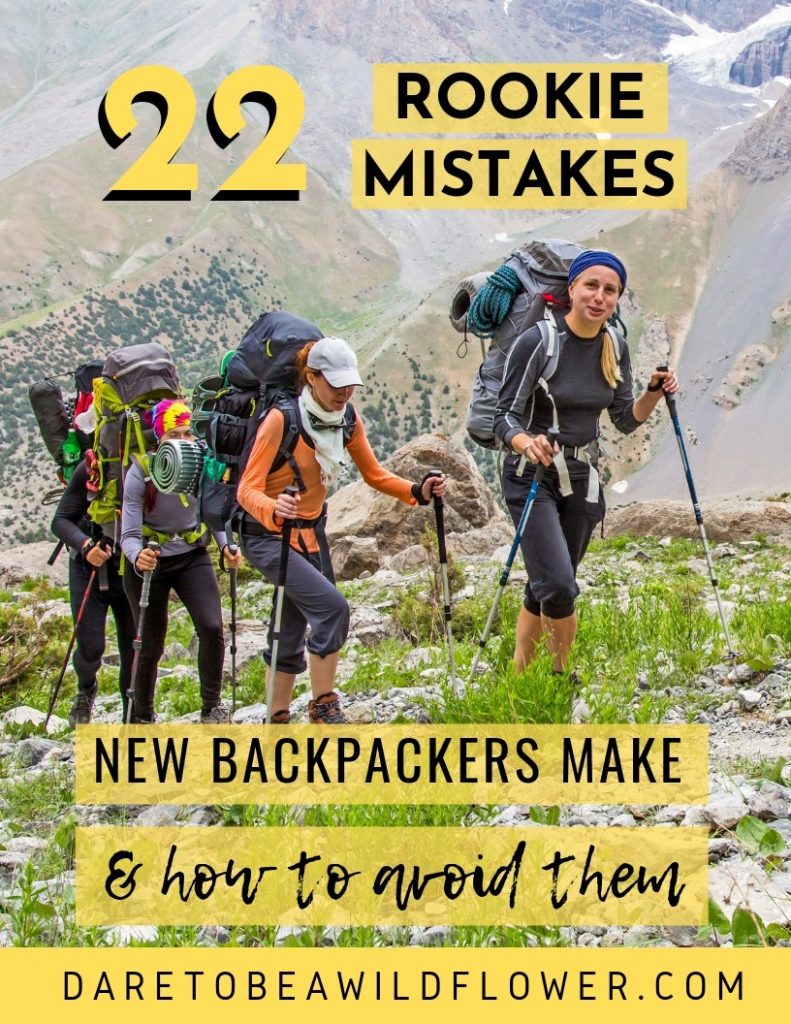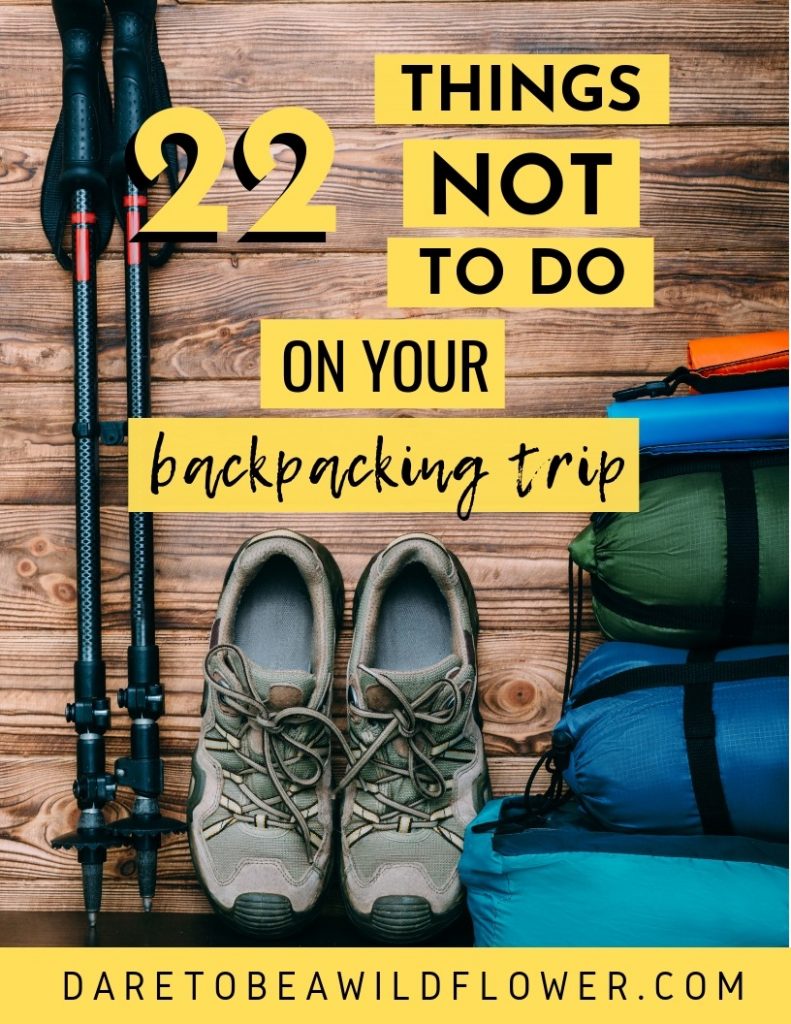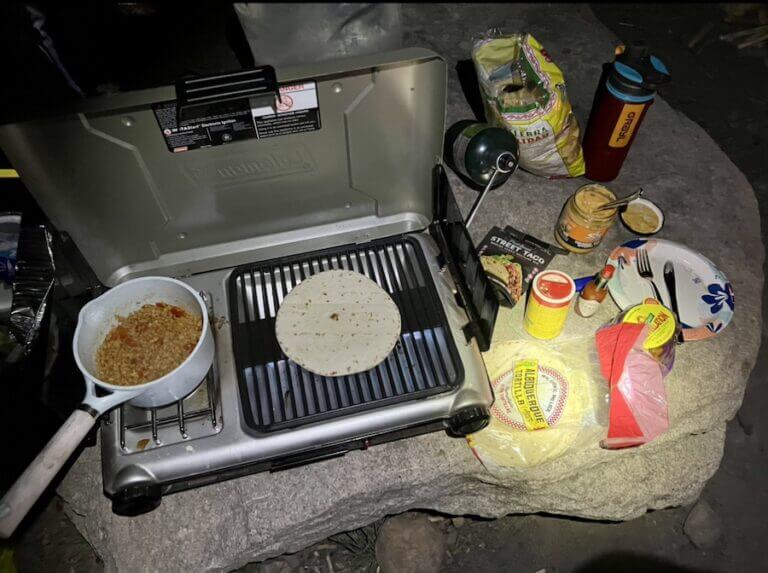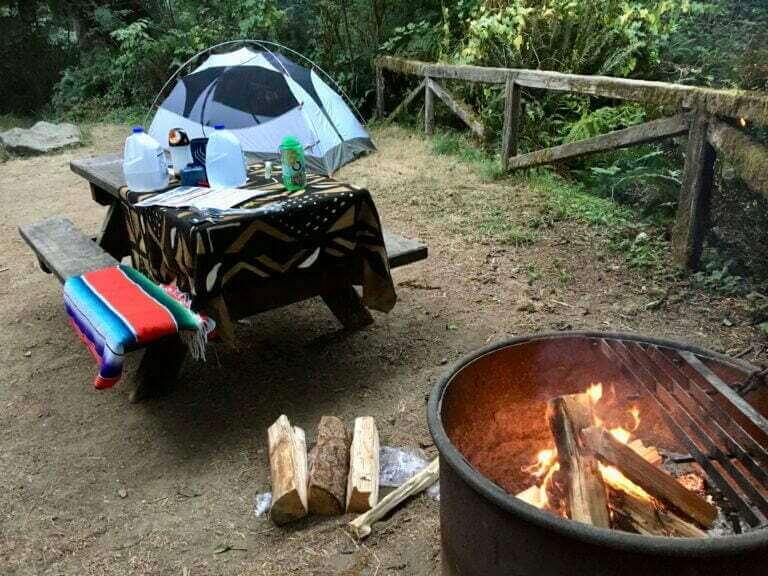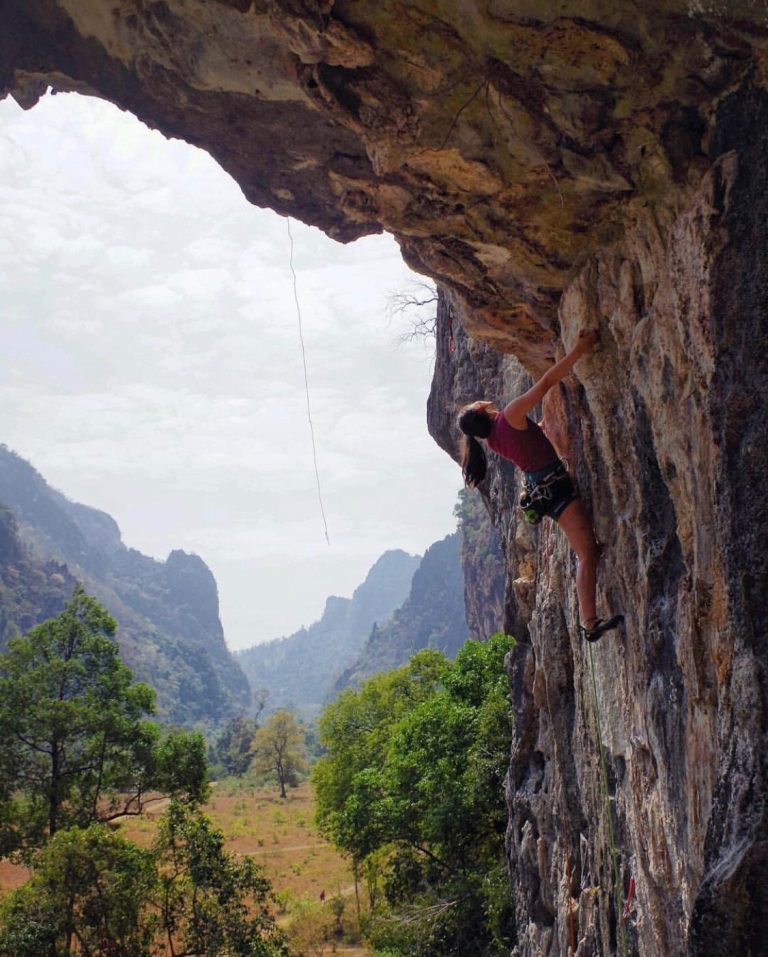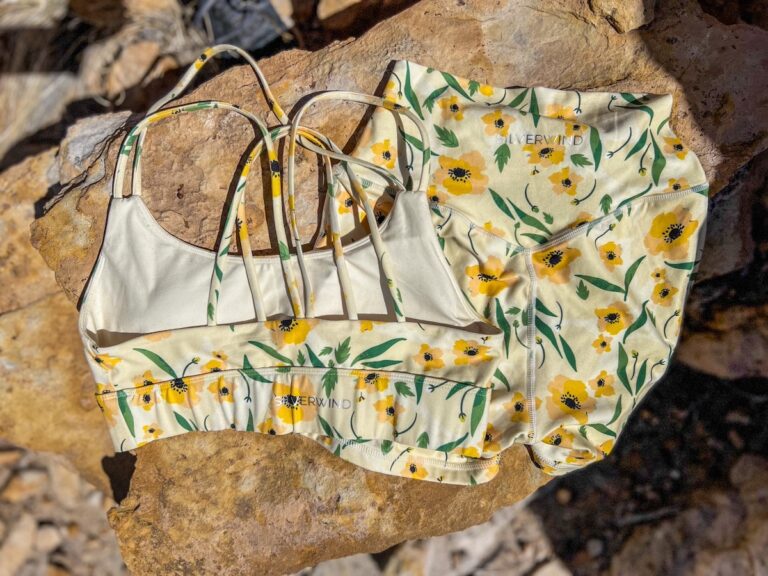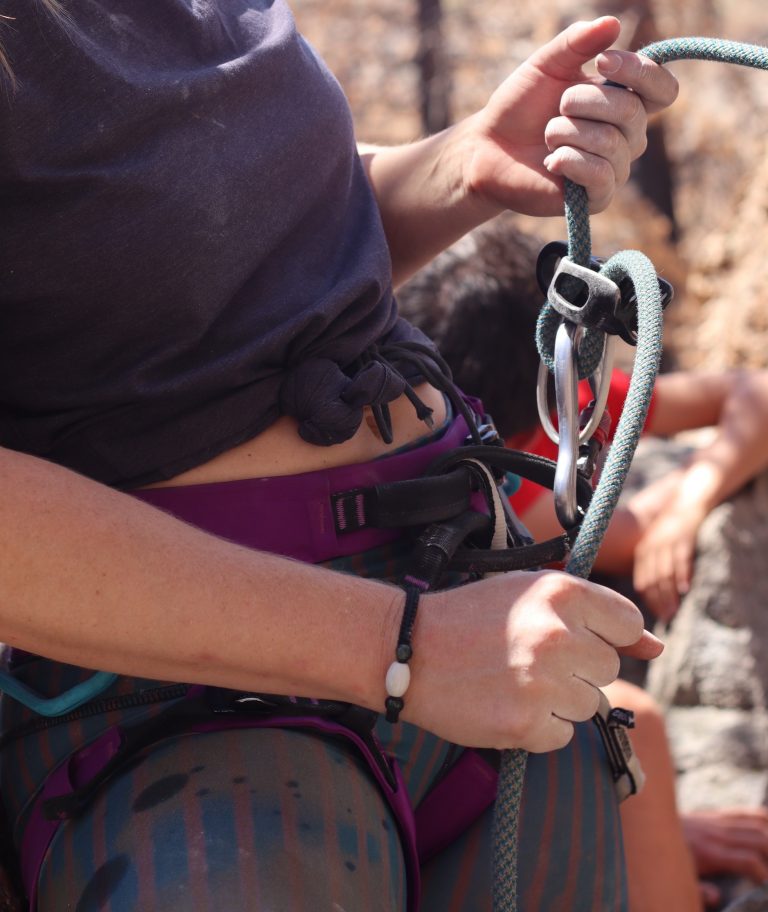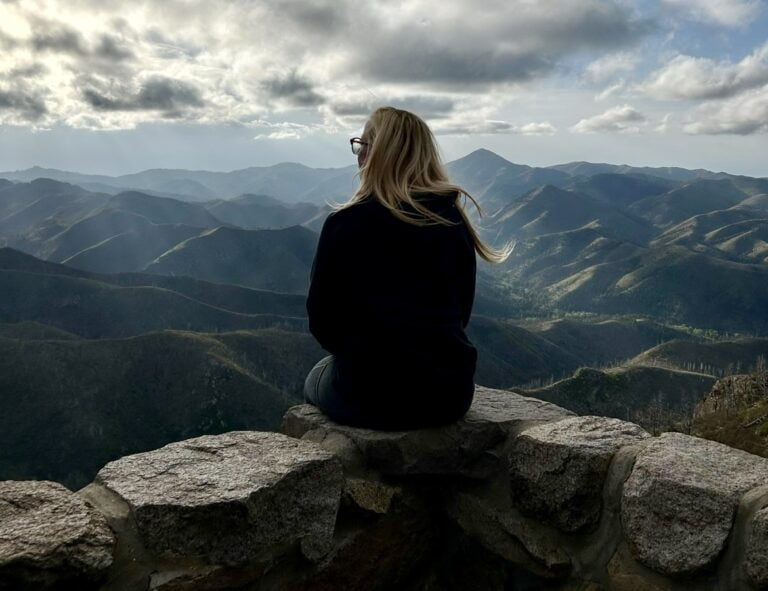22 Rookie Mistakes New Backpackers Make and How To Avoid Them
Most people’s first backpacking trip is NOT a 9+ week excursion through the backcountry of California…but mine was.
And the truth is: I had no idea what the hell I was doing.
I made more than my fair amount of mistakes (mostly terrible gear choices) that forced me to learn the hard, uncomfortable, and painful way.
Don’t make the same mistakes I did!
Backpacking shouldn’t be synonymous with pain and suffering.
Be prepared so you can feel comfortable, confident, and have a great time running wild in the wilderness!
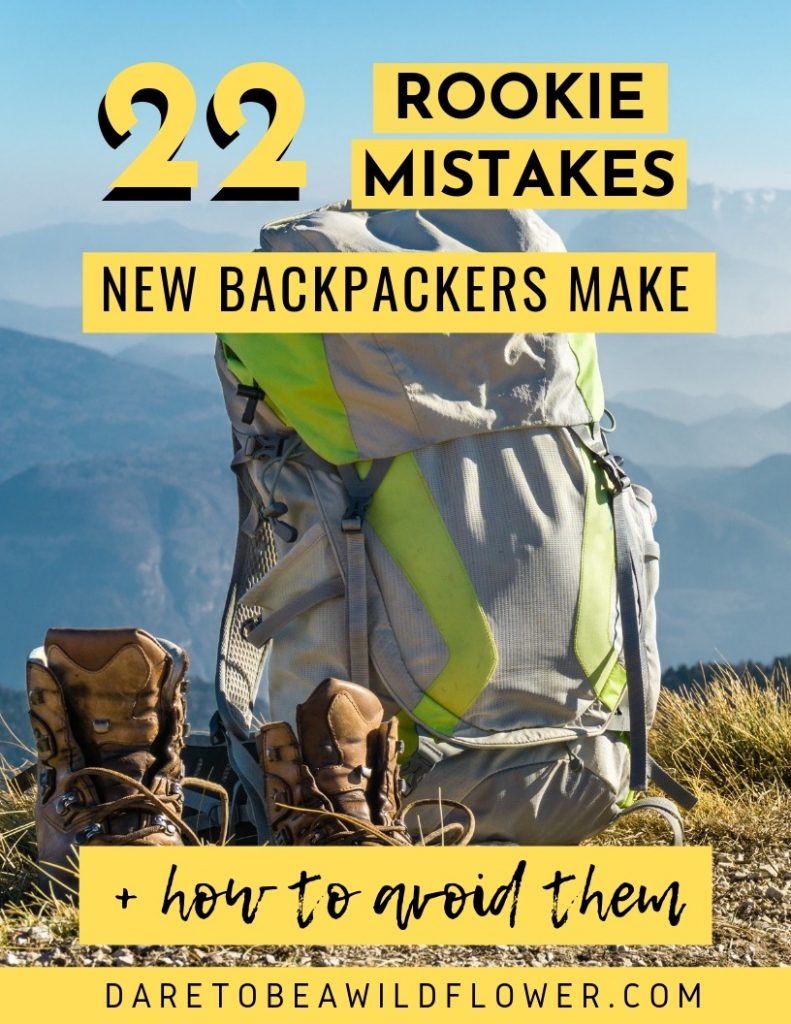
This post may contain some affiliate links for your convenience. This means if you make a purchase after clicking a link, I may earn a small commission but it won’t cost you a penny more! Isn’t that rad? Thanks for supporting the work I do at daretobeawildflower.com. Click here to read my full disclosure policy.
Let’s start with 10 epic fails from my first ever backpacking trip…
Backpacking Poncho vs. Rain Jacket
Backpacking ponchos protect both you and your pack from getting soaked during a downpour. Two for the weight and price of one? I was all about it at the gear shop!
Turns out the wind and rain can easily find it’s way underneath this loose fitting, one-size-fits-all approach.
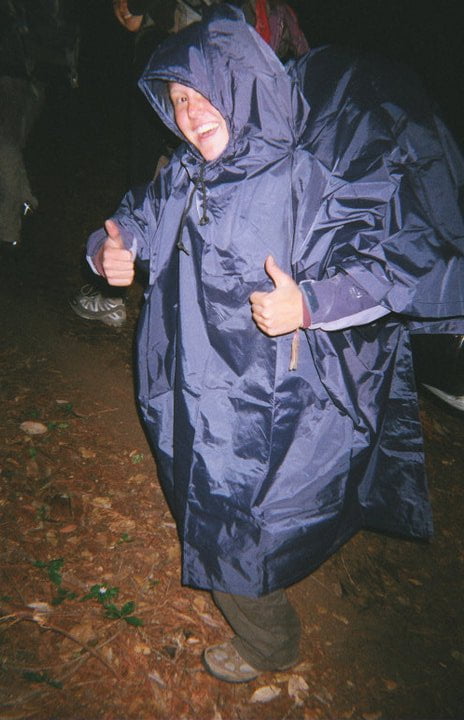
Long story short: It was a cold and pretty wet hike out of Big Sur that night. Do yourself a favor and opt for a seam-sealed, rain jacket and a pack cover. Don’t let the smile fool you.
Using a men’s sleeping bag.
Believe it or not, there are differences between a men’s and a women’s sleeping bag.
Differences include: length, shape, and insulation.
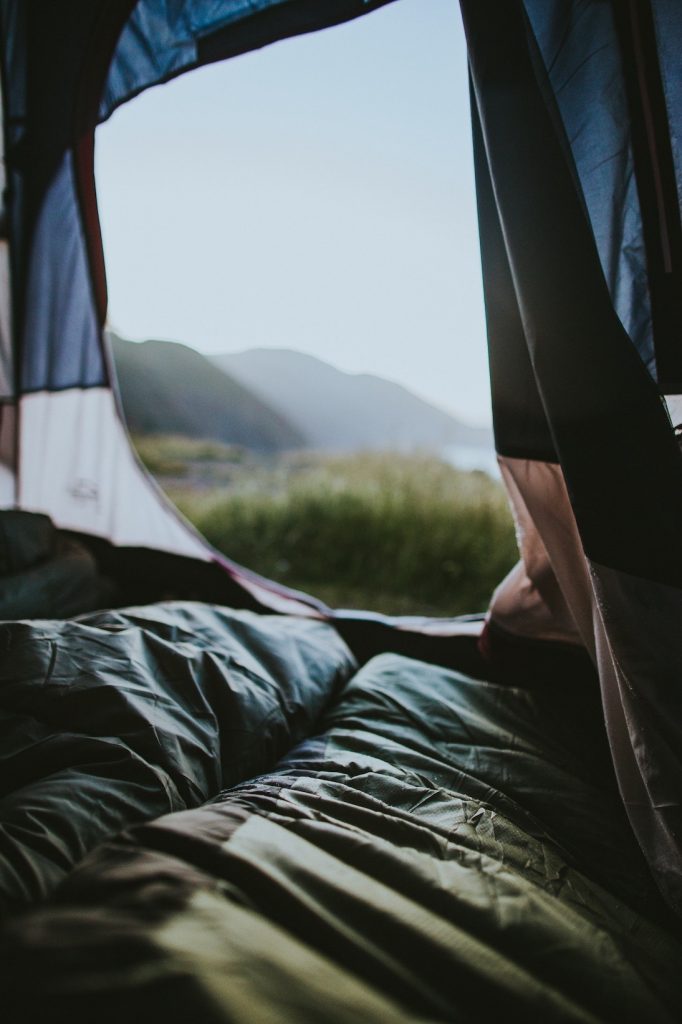
- Length
- Men’s Standard Length: 6″ ft
- Women’s Standard Length: 5’6″ ft
- Why does this matter?
- Dead space at the end of your sleeping bag = frozen toes all night.
- The snugger your sleeping bag fits around your body, the more efficiently your body heat can insulate your bag and keep you nice & toasty.
- Shape
- Men’s bag: Wider in the shoulders.
- Women’s bag: Wider in the hips.
- Insulation
- Warmer: Women’s bags are actually warmer than men’s bags, even at the same temperature rating.
- Location: Some outdoor gear designers have become keen to placing more insulation per square inch in the hands & feet area of women’s bags where women tend to get colder compared to men.
If you are a woman who is close to 6 feet tall, then a men’s bag could totally work for you!
Just keep in mind the shape & insulation rating is designed for human furnaces aka men so you may want to consider getting a bag rated for colder temps.
Not getting fitted for a backpack.
If I usually wear a size M, then a size M backpack should fit just fine, right? WRONG!
Turns out your actual backpack size has to do primarily with the length of your torso.
Specifically, distance between the top of your hip bone (the apex of your iliac crest for my anatomy nerds out there) to your C7 (cervical spine 7) vertebrae aka that boney vertebra that pokes out from behind your neck will determine your proper backpack size.
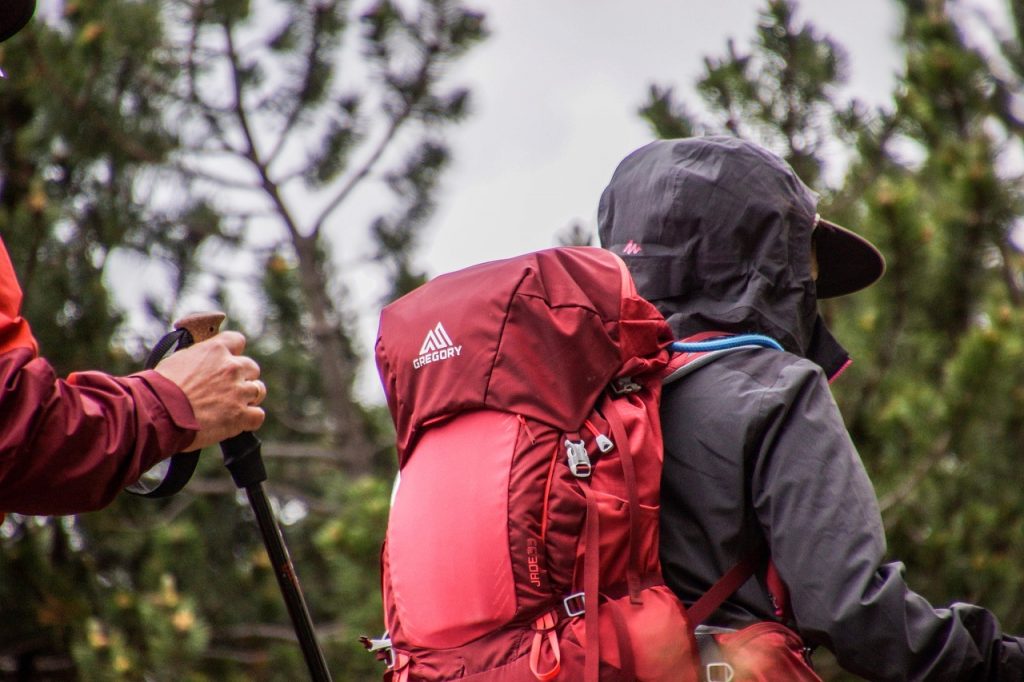
Tip: Head into your local REI or local adventure outfitter and ask a pro to fit you for a pack. Trust me, it’s worth your time!
Not getting fitted for a hiking boot.
When gearing up for this trip, someone gifted me a pair of old hiking boots in good that were my shoe size! Woohoo, I just saved myself at least $100!
Little did I know, when it comes to a trail shoe, your size will be different than your casual shoe size.
Sizing up is a must for a trail shoe or boot.
My feet were in excruciating pain with every step I took, forcing me to move ridiculously slow.
I was always they last one in my tribe and definitely slowed the whole group down. Those hiking boots suddenly felt 2 sizes too small (because they totally were).
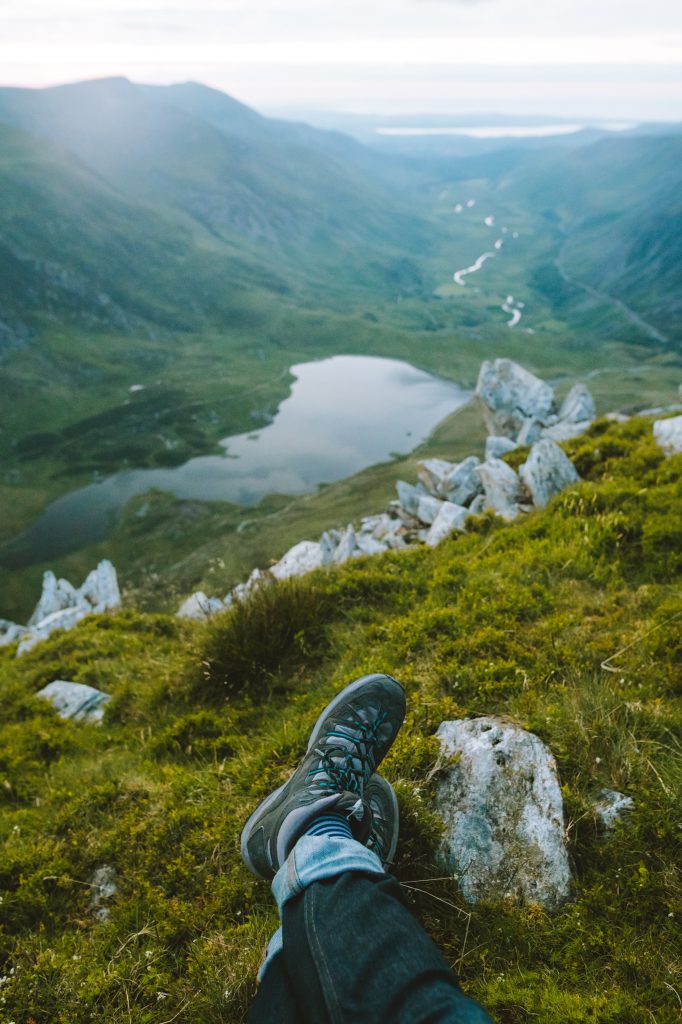
Typically, hikers size up a full size (and sometimes even more) from the actual length of their foot to allow for thicker socks, foot swelling, and extra toe space for downhill hiking.
Buying the wrong kind of base layer and freezing my ass off.
When I was collecting my gear off of an essential backpacking gear list, I came across the item “Base layer aka Long Johns”.
Hearing this term for the first time, I asked my dad if he knew what these were. He responded with a, “Oh yeah, it’s like a pajama set made from a waffle-like material.” So he searched for said waffle-textured PJ’s and we ordered them offline from a popular department store.
Spoiler alert: Waffle-textured pajamas did not keep me warm and there were nights in which I was freezing my ass off wondering if I was going to make it to the next morning alive. True story.
Invest in a proper set of base layers, it makes a huge difference! REI, Patagonia, Smartwool, and Black Diamond all make high quality, high performing base layers made of wool or synthetic fibers that will keep you warm in the alpine and last for many years to come.
Buying a random puffy vest and wool sweater at a thrift store and expecting it to perform.
I found a GAP brand puffy vest at a thrift store for $10 and couldn’t have been more stoked!
I didn’t realize that there are obvious differences between outdoor brands that design quality performance wear for surviving in the unforgiving elements, and brands that create “outdoor clothing” for the style with lesser quality materials.
Now, don’t get me wrong, I’m all for shopping second hand! Just be sure to check that the item itself was made by a reputable outdoor gear brand.

Although it was a beautiful, bright turquoise color and easy on my debit card, it didn’t insulate my core very well leaving me to freeze during many cold nights.
Try apps like Poshmark for gently used quality outdoor clothing that is designed to keep you comfortable in the mountains.
Also, check to see when your local REI is hosting their quarterly Garage Sale for great deals on high quality, used gear.
For more tips on how to save money on outdoor gear, check out these top 20 cash saving tips.
Using a heavy, metal trowel…
Obviously, a major goal when packing for a backcountry excursion includes packing lightweight gear. Looking back, I shake my head and do a face palm when I remember using a heavy, metal (throw up ya double horns) trowel.
Who the hell designed this thing anyways? *sassy eye roll*
Now, I opt for this ultra lightweight trowel that weighs only .6 oz and comes in purple. The switch was a no-brainer!
Using a 3/4 Length Sleeping Pad
My very first sleeping pad was a 3/4 length pad which means it stopped at around my knees. It was not only uncomfortable, it was freezing not having that insulation down by my feet!
Some ultralight backpackers may argue that you just need to place your pack or some other gear down by your feet to insulate the lower half of your body from the ground.
But having tried that for months in the backcountry, I can confidently advise you against this method.
Saving an ounce or two was not worth the crappy sleep I got during this trip.
Now, I use the REI Co-Op Flash sleeping pad and absolutely love it! Highly recommended.
No Trekking Poles
This is embarrassing to admit, but I used to think trekking poles were only for old people with fragile joints.

Turns out trekking poles are great for all hikers who want to:
- Protect their knees when downhill hiking.
- Prolong the onset of leg fatigue by distributing weight between arms & legs.
- Increase speed by creating a rhythm.
- Increase balance on uneven terrain, river crossings, and slippery log crossings.
- Test unstable terrain before stepping on it.
- Push problematic things like poison oak, spiderwebs, & thorns out of the way.
- Check the depth of a puddle or snow bridge.
- Protect themselves against wildlife by lifting them overhead to appear larger to a threatening encounter.
Never switching out my socks on long hikes.
Always, and I repeats always, keep an extra pair of moisture-wicking socks handy when embarking on long day hikes.
They will get soaked from the sweat on your feet which puts you at high-risk for nasty, no-fun blisters.
Switch out your old, wet socks for a fresh, dry pair half way through your hike to keep your feet happy, blister-free, and on the move!
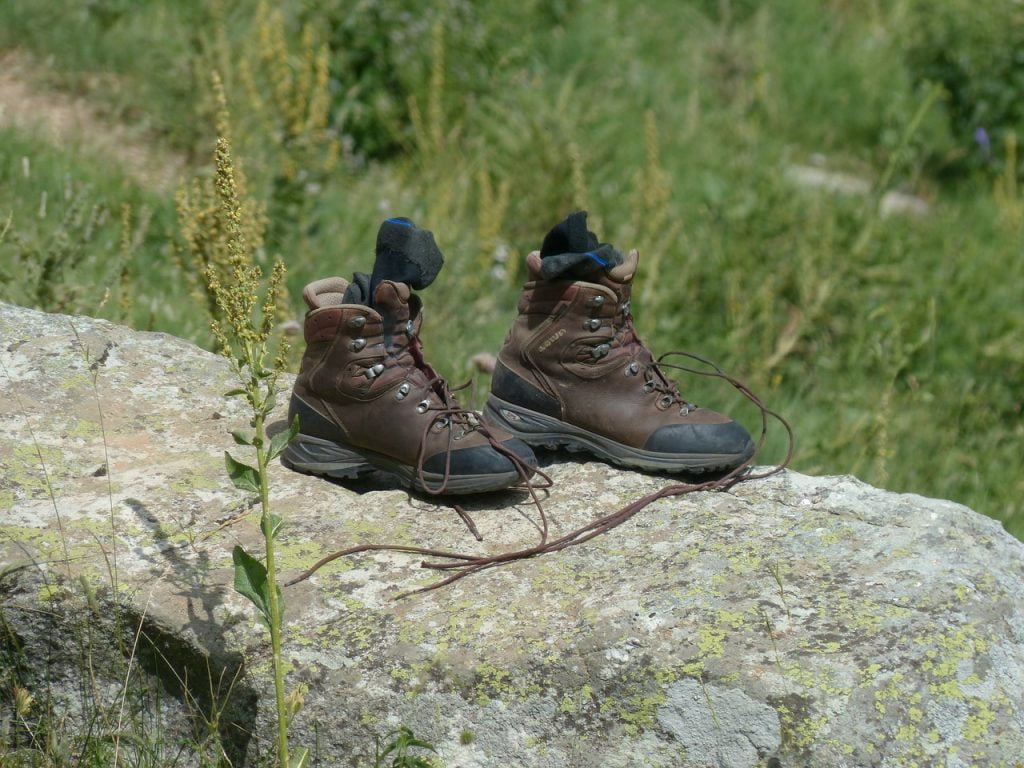
Other very common mistakes I’ve seen newbie backpackers make include:
Using a yoga mat instead of a sleeping pad.
Sleeping pads not only give you a little cushion from the hard ground, but most importantly, they insulate you from the cold ground.
- Heat transfers: You vs. the Earth. Sorry, but you just aren’t going to win this one.
- When selecting a sleeping pad, check out the R-value of the pad. The higher the R-value, the warmer the sleeping pad.
Not putting their phone on airplane mode.
Keeping your phone on airplane mode + low power mode will conserve the battery, allowing it to last several days or even more than a week depending on usage.
- Download any maps or books before hiking out and save your photo editing for when you return back home to stretch out your phone’s battery life.
Forgetting to leave their trip itinerary with an emergency contact and in their car.
The goal is for everything to go smoothly and according to plan, but as we all know, this isn’t always how life unfolds.
- Give Search & Rescue some clues as to where to find you in the case of an emergency situation.
- Be sure to write or print an itinerary of:
- Time + location of your trip start.
- Time + location of your trip end.
- Where you will be camping each night.
- Method, date, and time you will reach out to your emergency contact once you’ve returned safely from your trip.
- When your emergency contact should notify authorities that you are missing.
- Include phone numbers of local Search and Rescue, National Park ranger station, etc.
- Give a detailed description of you, your tent, your car, and anyone you are backpacking with.
Wearing the wrong type of footwear.
I once met a girl while I was thru-hiking the John Muir trail who only brought a pair of Chaco sandals for this 220-mile trail. Don’t get me wrong, I love my Chaco sandals, but they are not sufficient for a backpacking trip like the JMT.
Her feet were cut up from where the straps were digging into her skin while hiking downhill. We taped up her feet with some medical tape we just purchased during our last resupply.
If you are wondering how this story ends, she ended up getting helicoptered out of the backcountry.
Not breaking in their new hiking boots before their trip.
Just because your new, badass hiking boots fit perfectly out of the box is not a guarantee that they will feel great after a few miles of hiking.
- Be sure to test out your new trail kicks on a local, few mile hike before committing to them on a multi-day backcountry trip.
Not testing out and knowing how to properly use all of their gear before their backpacking trip.
For the love of Gaia, do not weight until you are at the mercy of the wild to try out using your water filter or stove for the first time.
- Play with your gear at home and do any research for questions you have beforehand.
Bringing too much sh*t!
Your backpack should weigh around 20-35 lbs for a typical overnight trip lasting 1-5 days in mild weather conditions.
- This includes food + water. EVERYTHING.
- Water will be one of the heaviest things in your pack at 2.2 lbs per liter!
- Pack weight shouldn’t exceed more than 20% of your body weight.
- Share gear like stoves, tents, & water filters with your adventure buddies and thus share the weight!
- Dress like a cartoon character and wear the same thing everyday. Hey, nobody said that backpacking smelt like roses.
- Bring plenty of underwear and a couple pairs of socks, but rewear your clothing for multiple days.
Bringing too much, too little or too heavy of food.
Dehydrated, lightweight food is the goal.
- Bringing a few pieces of fresh fruits & vegetables is okay but the water content makes them heavy and trust me, it all adds up!
- If you do bring some fresh meat or produce, eat them on the first night to lighten your load for the rest of the trip.
- Bring an extra days worth of food in case of an emergency situation.
Burying their used toilet paper.
- Toilet paper has unnatural things like chemicals + bleach that the ground does not want to deal with.
Anything you pack in, you must pack out.
- Pack out your used toilet paper in a zip sealed baggie. I like to use empty snack baggies that aren’t transparent like a trail mix or kale chips bag.
- If you are menstruating during your trip, you will also need to pack out any menstrual products that you use.
- I’m obsessed with menstrual cups and always use them when I’m backpacking (and back home as well)! This saves me from having to carry around the weight of all of my used tampons during my trip, not to mention the potential smells.
Learn about Leave No Trace Principles if you are unfamiliar with how to be a sustainable & responsible backpacker, hiker, and outdoor adventurer.
- These principles include:
- Where to camp, hike, establish campfires & “toilets”, and how to respect wildlife.
Related: What are the Leave No Trace 7 Principles?
Not keeping their camera batteries warm.
Cold weather will drain your GoPro or camera battery faster than you can yell “Summit Selfie!”
- Keep your batteries insulated with your body heat by stashing them in your pockets or sports bra.
Only bringing one method of water purification.
Personally, I prefer filtering my water over treating it with chemicals, but I always bring a backup in case my filter fails (which it has on Day 1 of a 7 day trip).
- Always bring a backup water filter/purification in case your primary fails.
Going to sleep with scented items in their tent or backpack.
Don’t forget to place all of your smelly things in a bear canister or bear hang at night. Literally, everything with a smell!
- This includes:
- Empty food wrappers
- Chapstick
- Sunscreen/ Lotions
- Toothpaste
- Hygiene wipes
- Be sure to find any food wrappers you may have shoved into your pants or backpack pockets during your hike!
- Place your bear canister or bear hang at least 200 feet away from your shelter.
- If you opt for a bear hang, place all your smelly things in an odor-proof bag like these. These are 17,000x more odor-proof than your typical ziplock bag which can dramatically reduce your chance of getting close and personal with a bear.
- A bear’s sense of smell is 2,100x better than that of a human’s and can smell food up to 20 miles away. Just remember that.

I hope you learned a thing or two about what NOT to do on your first backpacking trip!
Learn from the mistakes of others and be prepared to crush it in the backcountry like a pro! Pow pow!
Pin for Later | 22 Rookie Mistakes New Backpackers Make and How To Avoid Them
